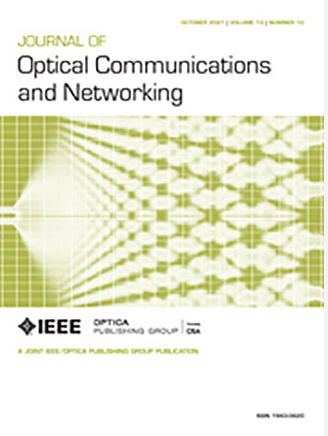Field demonstration of commercial PONs for edge-cloud-based industrial scenarios: requirements, use cases, and proofs of concept
IF 4.3
2区 计算机科学
Q1 COMPUTER SCIENCE, HARDWARE & ARCHITECTURE
引用次数: 0
Abstract
Industrial networks and edge-cloud integration in manufacturing processes have gained significant attention due to the evolving requirements of Industry 4.0. Key demands include data-driven network management, multi-service support, and low-latency, high-bandwidth communications, all essential for the industry’s future. Standardization groups like the European Telecommunications and Standardization Institute (ETSI) and several other research groups are working to quantify the requirements that industrial networks must meet to support Industry 4.0 applications. This study implements two ETSI use cases: Edge-Cloud-based Visual Inspection for Automatic Quality Assessment in Production and Edge-Cloud-based Control of Automated Guided Vehicles. We experimentally validate the performance of the use cases by employing a physical testbed for edge-cloud-enabled manufacturing based on ETSI recommendations. We present a passive optical network testbed that connects multiple manufacturing floors to an edge-cloud for management, orchestration, and control. Our implementation features nanosecond-scale synchronization using precision time protocol, real-time network and energy monitoring for ubiquitous visibility, and multi-service capabilities through network slicing.基于边缘云的工业场景的商业pon的现场演示:需求、用例和概念证明
由于工业4.0不断发展的需求,制造过程中的工业网络和边缘云集成受到了极大的关注。关键需求包括数据驱动的网络管理、多业务支持、低延迟、高带宽通信,这些都是行业未来发展的关键。欧洲电信和标准化协会(ETSI)等标准化组织和其他几个研究小组正在努力量化工业网络必须满足的要求,以支持工业4.0应用。本研究实现了两个ETSI用例:基于边缘云的生产质量自动评估视觉检测和基于边缘云的自动引导车辆控制。我们采用基于ETSI建议的边缘云制造物理测试平台,实验验证了用例的性能。我们提出了一个无源光网络测试平台,它将多个制造车间连接到边缘云,用于管理、编排和控制。我们的实现具有使用精确时间协议的纳秒级同步、无处不在的实时网络和能量监控以及通过网络切片实现的多服务功能。
本文章由计算机程序翻译,如有差异,请以英文原文为准。
求助全文
约1分钟内获得全文
求助全文
来源期刊
CiteScore
9.40
自引率
16.00%
发文量
104
审稿时长
4 months
期刊介绍:
The scope of the Journal includes advances in the state-of-the-art of optical networking science, technology, and engineering. Both theoretical contributions (including new techniques, concepts, analyses, and economic studies) and practical contributions (including optical networking experiments, prototypes, and new applications) are encouraged. Subareas of interest include the architecture and design of optical networks, optical network survivability and security, software-defined optical networking, elastic optical networks, data and control plane advances, network management related innovation, and optical access networks. Enabling technologies and their applications are suitable topics only if the results are shown to directly impact optical networking beyond simple point-to-point networks.

 求助内容:
求助内容: 应助结果提醒方式:
应助结果提醒方式:


